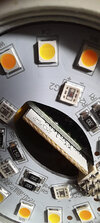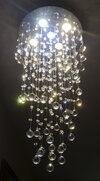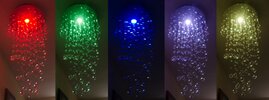Hi, we had a new kitchen extension done around 5 years ago with plenty of LED downlighters. I asked the electrician at the time how to change the bulbs but he was a bit vague and implied that they would last for many years. So….the first one has now failed. A bit of investigation showed me that the whole unit has to be replaced. A bit of fiddling got it down from the ceiling and I found a nice red connector, unclipped it and went on the internet to order a new one. However, it seems Aurora AU-FRLD811/30s are no longer available anywhere. I’ve found …811/40s on Amazon that look identical but apparently the ‘40‘ refers to the light type ‘cool white’.
The bulb like reflector is easy to remove, bringing me to the first question - is this what determines the light type? If so I could get the 40 and just use the old reflector?
Next question is if any other downlighter replacements use the same connector.
Photo attached

The bulb like reflector is easy to remove, bringing me to the first question - is this what determines the light type? If so I could get the 40 and just use the old reflector?
Next question is if any other downlighter replacements use the same connector.
Photo attached




